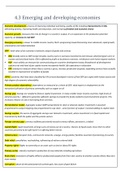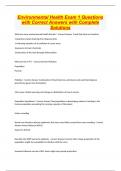Summary
Summary A* A-level Edexcel economics A 4.3 emerging and developing economies revision notes
A* analysis and evaluation in depth notes. Extremely detailed yet succint. This includes all of the chains of analysis you need to reach that A*. Move your grades up. With exams coming up these notes can secure you the grade you need for university. CGP, econplusdal notes (A*), youtube, physics mat...
[Show more]













